December 31, 2021
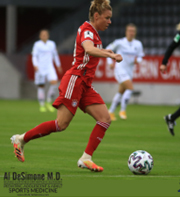
A recent study published in the American Journal of Sports Medicine shows a higher rate of return to pre-injury activity level after ACL reconstruction with Bone-Patella-Tendon-Bone autograft versus hamstring tendon autograft in high level athletes.
December 20, 2021

The use of stem cells for osteoarthritis of the knee has been extremely favored in recent literature according to the American Journal Sports Medicine. My post procedure regimen is to use crutches for 48 hours and to slowly progress activities within a 7 to 10 day period. I have had excellent results utilizing this procedure as patient’s claim that they have diminished pain and increased range of motion.
November 29, 2021


We are very excited to welcome Dr. Zachary Lum to our Team. Dr. Lum is a Board Certified Total Joint Specialist.
November 1, 2021
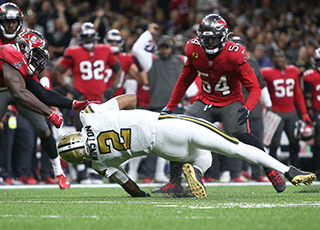 Jameis Winston, quarterback for the New Orleans Saints, sustained a left knee ACL tear during Sunday’s game. He was injured during a horse-collar tackle by Tampa Bay Buccaneers linebacker Devin White.
Jameis Winston, quarterback for the New Orleans Saints, sustained a left knee ACL tear during Sunday’s game. He was injured during a horse-collar tackle by Tampa Bay Buccaneers linebacker Devin White.
Athletes playing at such a high demand level who sustain this type of injury often warrant surgical intervention. Treatment often consists of reconstructing the Anterior Cruciate Ligament as well as addressing any other associated injuries that may have occurred. Anatomic ACL reconstructive surgery is often accomplished by utilizing bone-patella-tendon-bone autograft which is the gold standard. This is because of this grafts healing potential (graft incorporation) and low incidence of re-rupture when returning to high- demand sports. Immediately after surgery, brace immobilization, crutch ambulation and physical therapy is advised. Return to sports is usually within 8 ½ to 9 months, allowing for adequate healing, return of strength and incorporation of the graft.
October 28, 2021
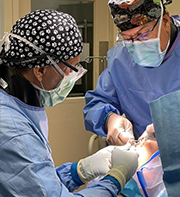
The application of Stem Cells during ACL reconstructive surgery aids in accelerated healing and better range of motion at 9 months post-op.
October 6, 2021
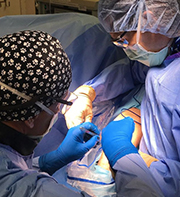
Platelet rich plasma application to augment a bone-patella-tendon-bone graft in ACL reconstructive surgery has been shown to be effective by increasing graft incorporation and maturation during the post surgical period.
September 28, 2021
Quadriceps tendon autograft has a failure rate as high as hamstring tendon autograft. Both remain inferior to bone-patella-tendon-bone autograft in ACL reconstructive surgery.
September 9, 2021
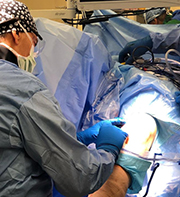
A recent report by the American Journal of Sports Medicine advises against using hamstring tendon autograft in young active patients undergoing ACL reconstructive surgery. When a patient is considering an autograft, the gold standard graft choice is Bone-Patella-Tendon-Bone.
August 27, 2021
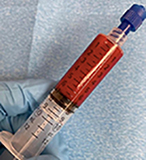
Stem Cell application for osteoarthritis of the knee is becoming a very common part of my practice. Only a short period of rest and crutches is warranted. Most, if not all, patients describe diminished pain and swelling after receiving a Stem Cell injection.
July 5, 2021
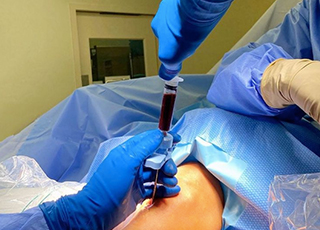
To perform a Stem Cell Injection, an Aspire Needle is used to aspirate bone marrow from the patient’s proximal tibia, to retrieve the patient’s own stem cells and progenitor cells. The bone marrow aspirate will then be combined with other growth factors, in order to create a bone marrow concentrate (BMC). These cells, along with billions of platelets and other beneficial white blood cells, will then be injected back into this patient’s knee to promote healing and potential repair of cartilage.
May 28, 2021

In recent years, the intraoperative use of Platelet Rich Plasma (PRP) has become increasingly popular in ACL Reconstructive surgery because of the positive benefits that have been shown in recent studies such as:
. Faster graft cell maturation
. Increased ACL graft/ bone healing
. Anti-Inflammatory response in the joint, contributing to decrease initial post-surgical swelling
. No increased risk of complication
March 28, 2021
 Denver Nuggets star point guard Jamal Murray sustained a left knee ACL tear during the final minute of Monday night’s game against the Golden State Warriors. This injury occurred when Murray tried to split two Warriors defenders on a drive to the basket.
Denver Nuggets star point guard Jamal Murray sustained a left knee ACL tear during the final minute of Monday night’s game against the Golden State Warriors. This injury occurred when Murray tried to split two Warriors defenders on a drive to the basket.
Athletes playing at such a high demand level who sustain this type of injury often warrant surgical intervention. Treatment often consists of reconstructing the Anterior Cruciate Ligament as well as addressing any other associated injuries that may have occurred. Anatomic ACL reconstructive surgery is often accomplished by utilizing bone-patella-tendon-bone autograft which is the gold standard. This is because of this graft's healing potential (graft incorporation) and low incidence of re-rupture when returning to high- demand sports. Immediately after surgery, brace immobilization, crutch ambulation and physical therapy is advised. Return to sports is usually within 8 ½ to 9 months, allowing for adequate healing, return of strength and incorporation of the graft.
April 2, 2021
It has become customary for Dr. DeSimone to send a personal video message to all of his patients after surgery. He gives them a brief summary of what had occurred during the procedure and emails each of his patients post operative photos and their physical therapy protocol.
March 28, 2021
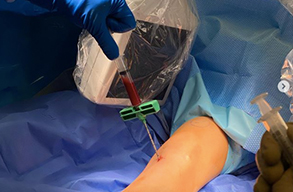
This is a young gymnast who suffers from severe osteoarthritis. After having minimal progress with conservative care, she decided to proceed with Stem Cell treatment. Stem cells are the most potent healing and regenerative factors present in our body. These stem cells are harvested from her own bone marrow.
Recent studies have shown that incorporation of autologous bone marrow concentrate treatment, that contains many mesenchymal and hematopoietic stem cells, can slow down the joint degeneration caused by osteoarthritis and in many cases halt it. It has also shown to assist in the stimulating regeneration/ cartilage repair of the knee joint and help diminish knee
March 27, 2021
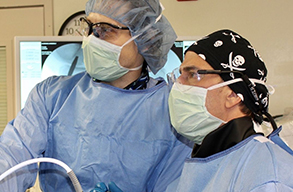 Due to an increasing level of organized athletics among children and adolescents, more ACL injuries are being diagnosed in the skeletally immature athlete. When these athletes present to the office with an ACL injury, my team must first determine the patient's bone age, by utilizing a series of radiographic growth remaining measurements. This will allow us to choose the appropriate type of procedure, thus preventing injuries to the growth plate. This is an important step in the patient's preoperative assessment to avoid risk of growth-related disorders. Because of this, I remain convinced that this procedure is extremely technical and should be treated with attention to detail, utilizing state-of-the-art surgical technique.
Due to an increasing level of organized athletics among children and adolescents, more ACL injuries are being diagnosed in the skeletally immature athlete. When these athletes present to the office with an ACL injury, my team must first determine the patient's bone age, by utilizing a series of radiographic growth remaining measurements. This will allow us to choose the appropriate type of procedure, thus preventing injuries to the growth plate. This is an important step in the patient's preoperative assessment to avoid risk of growth-related disorders. Because of this, I remain convinced that this procedure is extremely technical and should be treated with attention to detail, utilizing state-of-the-art surgical technique.
March 3, 2021
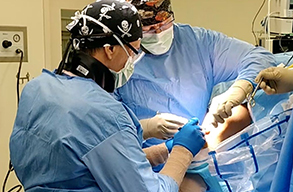
The incidence of ACL injuries has become common in young athletes due to a higher demand level in sports. According to a recent study published by the American Journal of Sports Medicine, patients with a hamstring tendon graft used for Anterior Cruciate Ligament Reconstructive Surgery had a revision rate of 2.5 times greater than those patients treated with Patella Tendon graft. The patellar tendon is often considered the “Gold Standard” graft for ACL Reconstructive Surgery because of its fast healing time, reliable graft size and reduced risk of graft rupture.
February 20, 2021
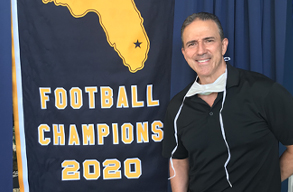
Congratulations to @sta_football on winning another State Championship! It has been a privilege to be on the sidelines this season. I look forward to many more successful seasons!
January 25, 2021
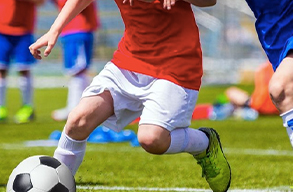
Many of my patients present to my office with complaints of a “Locked Knee”. This symptom often occurs when a patient suffers from a meniscus tear. The menisci act as load bearing cartilaginous structures that are located on both the inner and outer aspects of the knee. They provide stability and act as a major shock absorber for the knee when playing sports. When a meniscus tear occurs, the knee can become locked because of the tear restricting movement in the knee. Treatment often includes arthroscopic surgery that will allow for evaluation of the meniscus and potential for repair as prolonged conservative care is not advised due to the potential of the tear becoming larger and irreparable.
January 12, 2021
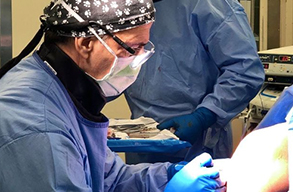 When a patient is diagnosed with an ACL tear one of the most important decisions they have to make with their surgeon is what graft type will be used during the procedure. Graft options include, hamstring tendon, quadriceps tendon, cadaveric tissue or “Autologous” Bone-Patella-Tendon- Bone.
When a patient is diagnosed with an ACL tear one of the most important decisions they have to make with their surgeon is what graft type will be used during the procedure. Graft options include, hamstring tendon, quadriceps tendon, cadaveric tissue or “Autologous” Bone-Patella-Tendon- Bone.
Over the last 20 years, I have used Bone-Patella-Tendon-Bone in the majority of my high level athletes. There has been no reported weakness subsequent to harvesting this graft type. Surgeon experience, state-of-the-art anatomic technique and proper fixation/ tensioning methods have a significant bearing on the results of this procedure but there is also enough evidence supporting that proper graft choice contributes to the athletes’ ability to return to sports at a competitive level with excellent long-term results.
December 12, 2020
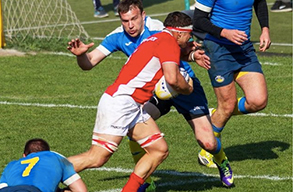
I often see patients with complaints of a “frozen shoulder”. This restriction of motion in the joint is known as adhesive capsulitis. Onset symptoms can be rapid or can occur over a period of time, causing limitation in motion, weakness and often pain. Treatment for this injury often includes physical therapy, icing, anti-inflammatory medications and activity restrictions.
November 30, 2020
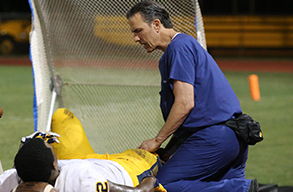
Athletes often ask me, “When can I return to the field after ACL Reconstructive surgery.”
Usually within 8 ½ to 9 months, an athlete is able to return to play. This amount of time allows for adequate healing, return of strength and incorporation of the graft. It is important that athletes do not return before they're fully healed as it can predispose them to re-injury, causing them to lose eligibility for another season.
November 10, 2020
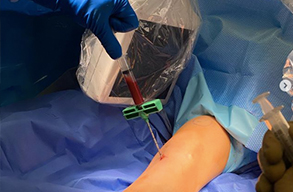
This is a young gymnast who suffers from severe osteoarthritis. After having minimal progress with conservative care, she decided to proceed with Stem Cell treatment. Stem cells are the most potent healing and regenerative factors present in our body. These stem cells are harvested from her own bone marrow.
Recent studies have shown that incorporation of autologous bone marrow concentrate treatment, that contains many mesenchymal and hematopoietic stem cells, can slow down the joint degeneration caused by osteoarthritis and in many cases halt it. It has also shown to assist in the stimulating regeneration/ cartilage repair of the knee joint and help diminish knee pain.
Dr. Alex Bertot and Dr. Michael Cohen assisting me in a complex knee multi ligament reconstructive procedure this morning.
Oct 05, 2020
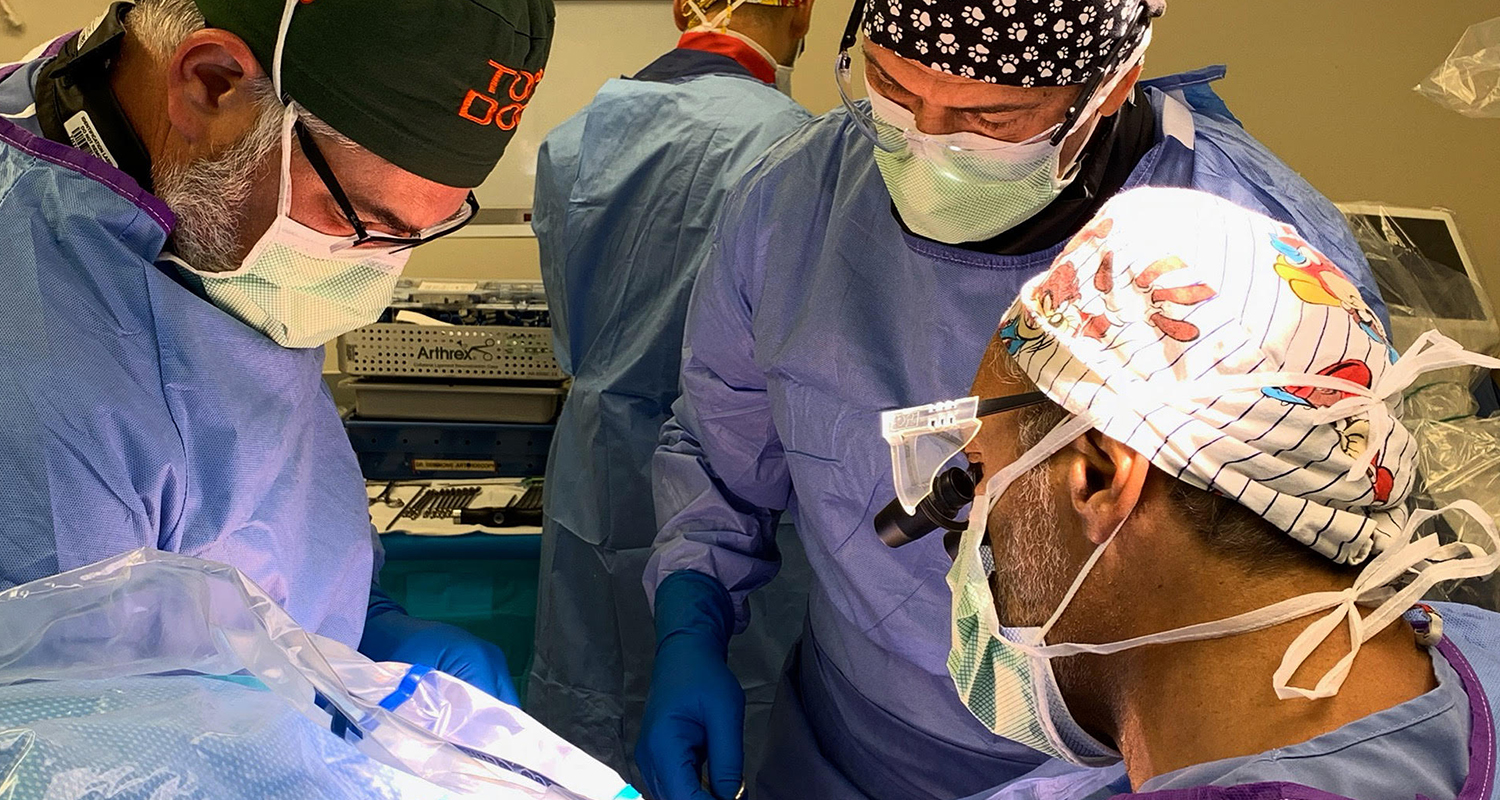
ACL Injuries in the NFL
Sep 29, 2020
 As week 2 of NFL games come to an end, there are reports of multiple devastating injuries. Most notably, Saquon Barkley, RB for the New York Giants, suffered a torn ACL Sunday against the Bears. It was also announced that St. Thomas Aquinas High School Alumnus, Nick Bosa of the 49ers, is likely to have suffered a torn ACL as well.
As week 2 of NFL games come to an end, there are reports of multiple devastating injuries. Most notably, Saquon Barkley, RB for the New York Giants, suffered a torn ACL Sunday against the Bears. It was also announced that St. Thomas Aquinas High School Alumnus, Nick Bosa of the 49ers, is likely to have suffered a torn ACL as well.
Anterior Cruciate Ligament (ACL) injuries have become more common in athletes participating in high-demand sports such as football, soccer and rugby. These athletes are predisposed to ACL ruptures because of excessive twisting, hyperextension and/ or deceleration that occurs when playing these sports. Concomitant injuries to the knee may also include other ligaments, the meniscus and/ or articular cartilage. Athletes that play at such a high-demand level, like Barkley and Bosa, often warrant surgical intervention.
Treatment often consists of reconstructing the Anterior Cruciate Ligament as well as addressing any other associated injuries that may have occurred. Anatomic ACL reconstructive surgery is often accomplished by utilizing bone-patella-tendon-bone autograft which is the gold standard. This is because of the grafts healing potential (graft incorporation) and low incidence of re-rupture when returning to high- demand sports. Immediately after surgery, brace immobilization, crutch ambulation and physical therapy is advised. Return to sports is usually within 8 ½ to 9 months, allowing for adequate healing, return of strength and incorporation of the graft.
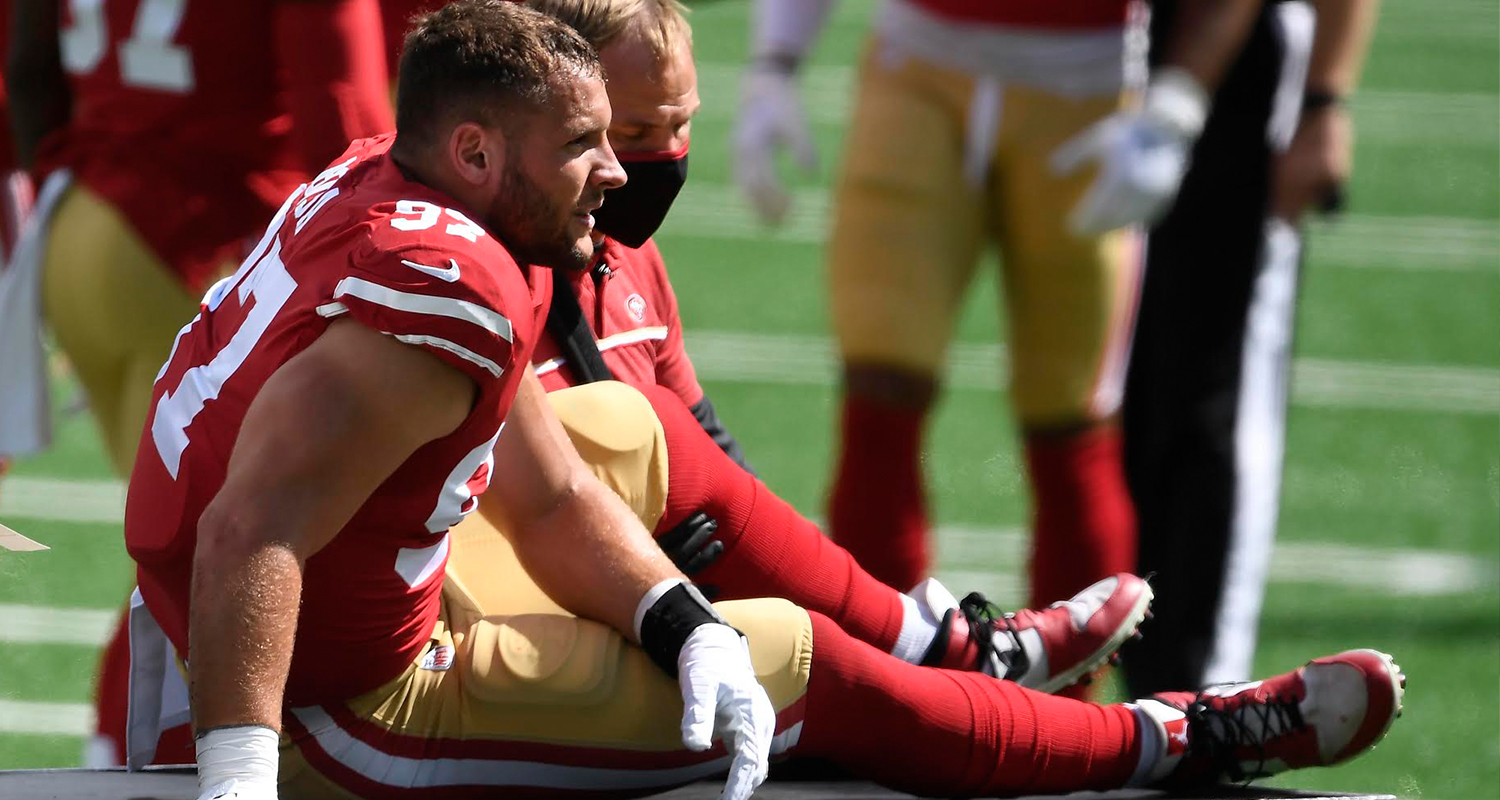
Orlando Magic's Jonathan Isaac ACL Injury
Aug 19, 2020
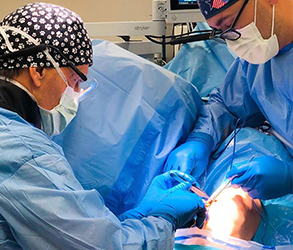
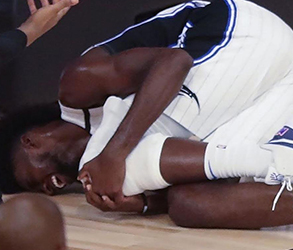 Jonathan Isaac, the potential young star for the Orlando Magic, tore his left knee ACL during Sunday night’s game against the Sacramento Kings. The injury occurred during a non-contact drive to the hoop. This is his second event to his left knee after suffering a hyperextension injury that required Isaac to take seven months off the court.
Jonathan Isaac, the potential young star for the Orlando Magic, tore his left knee ACL during Sunday night’s game against the Sacramento Kings. The injury occurred during a non-contact drive to the hoop. This is his second event to his left knee after suffering a hyperextension injury that required Isaac to take seven months off the court.
In my experience, Anatomic ACL Reconstructive Surgery is the treatment of choice for the high demand athlete. I truly believe that autologous Bone-Patella Tendon-Bone is the gold standard graft choice. This graft has been described as having lower incidence of failure, better fixation, quicker incorporation into the bone and the highest rate of return to full pre-injury activities, including sports. It is true that surgeon experience, state-of-the-art anatomic technique and proper fixation/ tensioning methods have significant bearing on the results of this procedure; but there is also enough evidence supporting that proper graft choice significantly contributes to the athletes’ ability to return to sports at a competitive level.
Utilizing Bone-Patella-Tendon-Bone during ACL Reconstructive Procedures
March 13, 2020
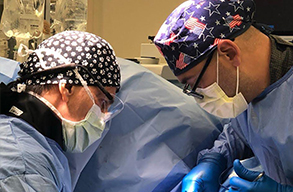
When reviewing surgeon’s graft choice throughout the nation, more than 75% of surgeons utilize autologous bone-patella tendon-bone during ACL reconstructive procedures in their collegiate and professional athletes. The literature confirms that this graft has a much lower incidence of failure, has excellent fixation, quicker incorporation into bone and the highest rate of return to full pre-injury activities, including sports.
Return to Play After ACL Reconstructive Surgery
February 28, 2020

As per recent report by the Journal of Bone and Joint Surgery, the return to play subsequent to ACL reconstructive surgery was highest using bone-patella-tendon-bone autograft. This graft choice remains the optimal choice in the high demand athlete, leaving hamstring and cadaveric tissue as a less optimal alternative.
Proper Graft Choice for ACL Reconstructive Surgery
January 24, 2020

When a high school or collegiate athlete is diagnosed with an ACL tear, the most frequently asked question is regarding graft choice. As of January 2020, The American Journal of Sports Medicine states that there is a 2 times higher incidence of re-injury, ACL re-rupture and contralateral ACL tear, with the use of hamstring autograft compared with bone-patella-tendon-bone autograft. Cadaveric allograft is rarely an option in this patient population. This further proves that bone-patella-tendon-bone autograft is the Gold Standard graft of choice for the high demand athlete.
Marco Asensio ACL Injury
August 7, 2019
Anterior Cruciate Ligament (ACL) injuries have become more common in athletes participating in high- demand sports such as football, soccer and rugby. These athletes are predisposed to ACL ruptures because of excessive twisting, hyperextension and deceleration that occurs when playing these sports. Concomitant injuries to the knee joint may also include other ligaments, the meniscus and and/ or articular cartilage.
Most recently, Marco Asensio, soccer player for Real Madrid, suffered an ACL and Lateral Meniscus injury during their preseason game against Arsenal in the International Champions Cup. Athletes with high- demand activity level, like Marco Asensio, often warrant surgical intervention.
Treatment will consist of reconstructing the Anterior Cruciate Ligament as well as addressing any other associated injuries. Anatomic ACL reconstructive surgery is often accomplished by utilizing bone-patella-tendon-bone autograft. This graft is the gold standard in ACL reconstructive surgery because of its healing potential (graft incorporation) and low incidence of re-rupture when returning to high- demand sports. Immediately after surgery brace immobilization, crutch ambulation and physical therapy is advised. Return to sports is usually within 8 ½ to 9 months, allowing for adequate healing, return of strength and incorporation of graft.
Innovative Augmentation of ACL Graft
February 10, 2019
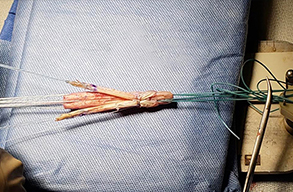
ACL injuries have become extremely common in community athletes. ACL reconstructive surgery
has become the treatment of choice for the high demand athlete. I have recently devised an
innovative way of augmenting the graft with cadaveric tissue for reconstruction to provide a stronger,
more durable graft which can often preclude re-rupture in the petite athlete.
Stem Cell Therapy In ACL Reconstructive Surgery
January 22, 2019
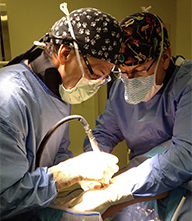
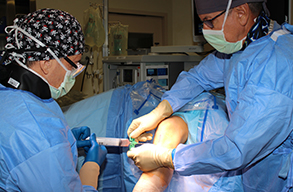
Stem cells are the most potent healing and regenerative factors present in our body. Healing
subsequent to an injury or surgery involves a complex but specific sequence of events that requires
various cells, such as proteins and growth factors to promote faster healing. When used in ACL
reconstructive surgery, stem cells have the ability to promote graft ligamentization (maturation) and
incorporation (healing) into bone. During ACL reconstructive surgery stem cells are commonly
harvested from the upper tibia and then are injected into the graft subsequent to its placement.
The Use of Platelet-Rich Plasma in Arthroscopic Surgery and Sports Medicine
July 08, 2018
 The Use of Platelet-Rich Plasma in Arthroscopic Surgery and Sports Medicine
The Use of Platelet-Rich Plasma in Arthroscopic Surgery and Sports Medicine
Platelet-rich plasma (PRP) is a new technology focused on enhancing the healing response after a sports related injury. PRP is prepared by withdrawing peripheral blood from a patient and place it into a centrifugation to obtain a highly concentrated sample of platelets which will release growth factors with healing properties. It also contains plasma, cytokines, thrombin, and other factors that are implicated in wound healing and have inherent biological and protective properties. The prepared concentrate is then injected back into the patient at the site of injury.
PRP preparations have been used therapeutically in various medical fields with a more recent evolution and promising results in the field of sports medicine and arthroscopic surgery. Sports medicine patients often require a rapid return to their preinjury level of function, and PRP may have certain applications that will speed recovery in cases of tendon, ligament, muscle and cartilage injuries. In particular,
anterior cruciate ligament reconstruction has shown better graft maturation, improved donor site morbidity and pain control. With the use of PRP, the biological integration of the graft is accelerated thus allowing for patients to undergo faster, more intensive rehabilitation and quicker return to sports. This has also been used for
meniscus repair, rotator cuff injuries and has an application in osteoarthritis involving the shoulder and/ or knee joint.
Because the blood is harvested from the athlete it easily prepared and has an excellent safety profile. Since the advent of PRP, the use of this treatment modality has opened another therapeutic door for sports medicine physicians and orthopaedic surgeons. Future directions of PRP include improving the results of arthroscopic and related surgery, in addition to delineating the correct dosage, timing, as well as ideal techniques of its application.
Miami Dolphin’s Ryan Tannehill Return Subsequent to ACL Tear
May 14, 2018
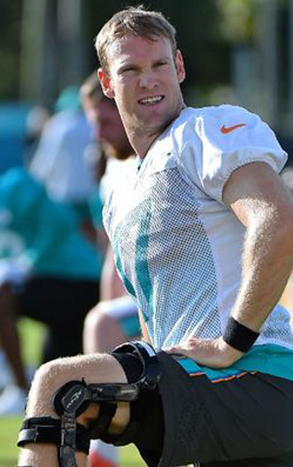 ACL injuries can be devastating as they will often preclude an athlete from playing sports for sometimes over one year. Because of the demand level of most athletes these injuries usually require surgical intervention. Many ACL injuries can often be associated with additional injury such as collateral ligaments or meniscus tears. This will require additional surgery and often require additional time for healing postoperatively.
ACL injuries can be devastating as they will often preclude an athlete from playing sports for sometimes over one year. Because of the demand level of most athletes these injuries usually require surgical intervention. Many ACL injuries can often be associated with additional injury such as collateral ligaments or meniscus tears. This will require additional surgery and often require additional time for healing postoperatively.
Over the last 10 years, surgical technique of ACL reconstructive surgery has improved as we are now performing an anatomic reconstruction which will often preserve the graft and prevent failure. We have been improving techniques, graft types and fixation methods to overall increase the longevity of this procedure despite the possible risk of re-injury when returning to contact sports. Physical therapy is required before surgery which will often improve the healing potential of this procedure. We have also delayed the return to sports which has been a predisposing feature for early graft failure.
Despite significant debate today, it will usually take an athlete at least 9 to 12 months to return to sports with no restrictions. Early return to sports will often predispose an athlete to failure. There're many factors that can help improve an athlete’s recovery. Initial compliance with regards to healing and physical therapy is often mandatory. Pre-habilitation prior to surgery is extremely important for an athlete to obtain the full range of motion and strength. Following surgery, a very diligent postoperative regiment is extremely important for the athletes to return to sports and to prevent re-injury.
In regards to Ryan Tannehill’s injury, he was diagnosed with a partially torn ACL and a MCL sprain. In August, he re-injured his knee where he fully tore his ACL. In my opinion, there is no such thing as a partial tear. Any compromise to the Anterior Cruciate Ligament will often cause instability to an athlete’s knee, especially if he is a high demand professional athlete. All athletes are at risk for failure subsequent to returning to sports however, they can limit that risk by resuming activities once they are completely healed and cleared by their physician. Compliance with regards to strengthening and activity restrictions is usually warranted for the first 6 to 8 months. If the procedure is done correctly and the athlete remains compliant the athlete should be able to return to sports in a full unrestricted manner.
STEPHEN CURRY'S RETURN TO PLAY
March 20, 2018
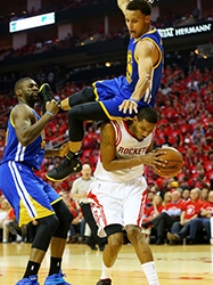 MCL injuries can sometimes be devastating in high level athletes. This is often dependent upon the degree and type of injury to the medial collateral ligament complex. If it is a complete tear, it may take an athlete anywhere between 8 and 12 weeks to return to play. Less significant injuries such as mild sprains will often take 4 to 6 weeks depending on severity. Usually an initial period of immobilization is warranted followed by an aggressive rehab program. I will sometimes use platelet rich plasma in the initial phase of healing and modify my athletes weight bearing for 5 to 7 days.
MCL injuries can sometimes be devastating in high level athletes. This is often dependent upon the degree and type of injury to the medial collateral ligament complex. If it is a complete tear, it may take an athlete anywhere between 8 and 12 weeks to return to play. Less significant injuries such as mild sprains will often take 4 to 6 weeks depending on severity. Usually an initial period of immobilization is warranted followed by an aggressive rehab program. I will sometimes use platelet rich plasma in the initial phase of healing and modify my athletes weight bearing for 5 to 7 days.
With much more significant injuries, often casting or long-term bracing with crutches may be in hand. Surgical intervention is rarely indicated unless there are concomitant injuries to the ACL and or menisci. Getting an athlete back on the court must be a careful and slow process. Often bracing is warranted and should be used during practice and participating in games. A stress test to the knee during clinical examination is usually the best means of determining whether or not the athlete is ready to return to sports. Sending them back too quickly may predispose them to further injury.
A SURGEONS PROSPECTIVE ON THE DERRICK ROSE INJURY
FEBRUARY 27, 2015

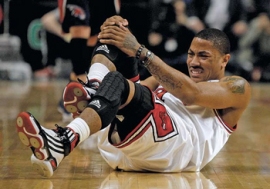 A recurrent tear of the meniscus after prior surgery is a very challenging problem for both the athlete and the surgeon.
A recurrent tear of the meniscus after prior surgery is a very challenging problem for both the athlete and the surgeon.
If the meniscal tissue is fragmented, a vascular or unstable from prior injury or unsuccessful surgery, then removal is in the athlete’s best interest. Suture repair of non-viable tissue may warrant another procedure which can often cause physical and emotional delay in returning to their sport.
When considering removal it is imperative to only excise the unhealthy portion of the meniscus and to save as much meniscus as possible. This will allow for an earlier return to play and reduce the chance of arthritis.
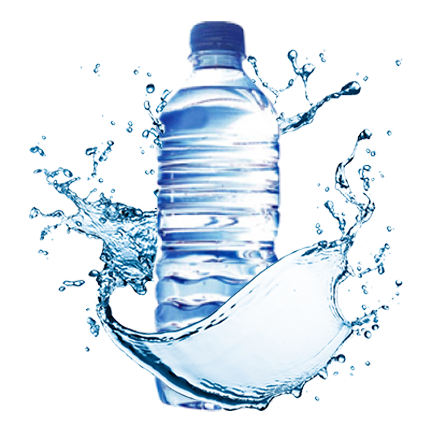
PROPER HYDRATION BEFORE, DURING AND AFTER SPORTS
OCTOBER 6, 2014
Did you know even mild dehydration can cause an adverse effect on a child’s athletic performance? With fall athletic programs in full swing and the weather still summer warm, it’s crucial that coaches, athletes and parents remain vigilant about proper hydration.
When young athletes become dehydrated, their core body temperature will quickly rise, which leads to more rapid dehydration. You can help prevent this by knowing the signs and symptoms of dehydration, including:
- . Muscle cramps
- . Weakness
- . Sudden decline in perf
- . Nausea and vomiting
- . Irritability
- . Headaches
- . Increased heart rate
- . Dark urine
- . Fainting
- . Decreased sweating
- . Increased heart rate
- . Sunken eyes
Maintaining adequate fluid levels is essential for every athlete. And it needs to happen before, during and after they “hit the field.” The amount of water will depend on the athlete’s size and age, but here’s a broad guideline:
Before Activity:
. Drink 4-8 oz. of water one to two hours before activity
. Drink 4-8 oz. of water 10-15 minutes before activity
During Activity:
. Drink 5-9 oz. of water or sports drink every 20-30 minutes
. Diluted sports drinks are recommended for quicker adsorption of electrolytes, if the child has been active for more than 60 minutes.
After Activty:
. Drink at least 24 oz. of water or sports drink for every pound of weight lost throughout activity
One of the most important functions of water is to cool the body. During exercise, muscles generate heat, which lead to increased body temperature. As this happens, the body will begin to sweat. When sweat evaporates, it cools the body. If the body has not received an adequate amount of water to replace the fluid lost from sweating, it will start to overheat. This is an extremely important when dealing with young athletes.
For one thing, children are more prone to heat-related side effects because they absorb heat quicker than adults. And, as many of us know, they don’t often think of rest and rehydration when playing sports and having fun. Until they can understand the importance of proper hydration , the responsibility falls on their coaches, trainers and parents. So remember, lets keep our young athletes hydrated!
COMMON INJURIES FOR FOOTBALL ATHLETES
SEPTEMBER 16, 2014

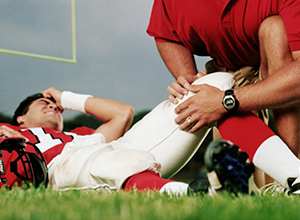 Football season is here! We all know that football is one of America’s most popular sports. Like with all sports, football comes with the risk of injury. Football has one of the highest risk of injury compared to any other sport because it is a high-impact sport. Tackling, blocking and other physical interactions between players can result in contusions, sprains as well as other injuries. With the 2014 NFL season looming, we decided to put together a list of the most common football (musculoskeletal) injuries.
Football season is here! We all know that football is one of America’s most popular sports. Like with all sports, football comes with the risk of injury. Football has one of the highest risk of injury compared to any other sport because it is a high-impact sport. Tackling, blocking and other physical interactions between players can result in contusions, sprains as well as other injuries. With the 2014 NFL season looming, we decided to put together a list of the most common football (musculoskeletal) injuries.
If the meniscal tissue is fragmented, a vascular or unstable from prior injury or unsuccessful surgery, then removal is in the athlete’s best interest. Suture repair of non-viable tissue may warrant another procedure which can often cause physical and emotional delay in returning to their sport.
When considering removal it is imperative to only excise the unhealthy portion of the meniscus and to save as much meniscus as possible. This will allow for an earlier return to play and reduce the chance of arthritis.
WHAT ARE MUSCULOSKELETAL INJURIES?
A musculoskeletal injury (MI) refers to damage of muscle or skeleton(bone), which is usually due to a strenuous activity, which is why the following injuries are very common in football players.
Here is a list of some of the most common injuries for football athletes:
. ACL Injuries: The anterior cruciate ligament in the knee can become damaged or torn when a player has a contact or twisting injury to his or her knee..
. MCL Injuries: Injury to the medial collateral ligament of the knee is also very common because it occurs when there is a contact injury to the outside of the knee.
. Torn Meniscus: When a player rotates their body while a foot stays planted, the knee can twist, causing a tear to the meniscus.
. Ankle Sprains and/or Strains: Perhaps one of the most common injury in all sports. Ankles are susceptible to soft tissue injury when an athlete plants and pivots their ankle joint when changing direction.
. Muscle Contusions: A strong impact to a large muscle, usually in the thigh, can cause a contusion. This is basically a large, deep bruise that can impair muscle function.
. Torn Hamstring: Bursts of speed can cause the hamstrings to tear if the player is not conditioned or properly warmed up.
. Shoulder Tendinitis: Frequent throwing can cause overuse injuries like shoulder tendinitis from repetitive motions.
. Shoulder Separation and/or Dislocation: A direct blow to the top of the shoulder can cause a separation of the acromioclavicular joint, while a dislocation occurs when the head of the humerus becomes dislodged from the shoulder joint.
ATTENTION ATHLETES: SIMPLE TIPS FOR PREVENTING INJURIES
SEPTEMBER 16, 2014

 Sports injuries can affect your athletic abilities and competitiveness. Believe it or not, sport related injuries can even affect the quality of your life and your ability to enjoy recreational activities. Luckily, there are many different things you can do as an athlete to help prevent injuries. Here are a few simple tips:
Sports injuries can affect your athletic abilities and competitiveness. Believe it or not, sport related injuries can even affect the quality of your life and your ability to enjoy recreational activities. Luckily, there are many different things you can do as an athlete to help prevent injuries. Here are a few simple tips:
Tip #1:
Introduce new athletic activities gradually, whether it’s a new training program or just a new exercise routine.
This is why: People often jump straight in to a new training program, new exercise routine, or new sport related activity without giving much thought to possible injuries to muscles and joints. By simply starting any new athletic activity gradually, you can avoid these types of injuries.
Tip #2:
When you are tired, do not train.
This is why: Fatigue is one of the most common causes of sport related injuries, and training when you are tired makes you susceptible to many different types of injuries.
Tip #3:
Stop or take a break from athletic activities if you “Feel Pain.”
This is why: Pain is often a sign that something may be wrong. If you experience any pain when training or performing athletic activities, you should stop immediately to avoid the onset of an injury.
Tip #4:
Don’t ignore minor sport related injuries.
This is why: Even if an injury doesn’t bother that much, be sure to allow enough rest for the injured area to heal; this will prevent a minor issue from becoming a more debilitating problem in the future.
In order to reduce your chances of injury, it is necessary to take preventative action. It’s true that not all sports-related injuries can be prevented, but with the right techniques, you can prevent most injuries. Implementing these simple routines can help you to avoid most common sports injuries.
ACL INJURIES IN CHILDREN AND TEENS
AUGUST 11, 2014
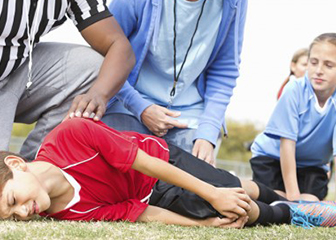 ACL (Anterior Cruciate Ligament) injuries in children and teens are less common than in adults, but they do occur, especially in teens who play a lot of sports. In younger people especially, an ACL injury that hasn’t been treated or even one in which the treatment didn’t work can lead to future knee problems. The knee may become more and more unstable, and over time, arthritis may start to develop.
ACL (Anterior Cruciate Ligament) injuries in children and teens are less common than in adults, but they do occur, especially in teens who play a lot of sports. In younger people especially, an ACL injury that hasn’t been treated or even one in which the treatment didn’t work can lead to future knee problems. The knee may become more and more unstable, and over time, arthritis may start to develop.
A child with an ACL injury can sometimes be treated without surgery to avoid damage to the child’s still-developing bones. Rehab exercises, wearing a brace, and avoiding activities that require jumping or twisting will sometimes help, but studies suggest that the more active a child is, the less likely these treatments will work and the more likely surgery will be needed in the future.
The best treatment option of ACL tears in the young and athletic children is usually reconstructive surgery. This is where a tendon is usually taken from another part of the body and used to rebuild the torn ligament in the knee. Non-operative treatment like wearing a brace or rehab exercises usually fail and can cause further harm, including damage to the meniscus cartilages.
Most Common Reasons for Having ACL Surgery as a Child or Teenager
. The knee is very unstable even when performing simple daily activities.
. The knee can’t be made stable with other methods such as rehab exercise or wearing a brace.
. The child has both an ACL injury and a meniscus tear.
. The child is a serious athlete in a sport that requires a lot of running, jumping, and stopping quickly.
One of the main risks of surgery in a child whose bones are still growing is “slowed growth.” Another common risk is a deformed thigh bone. These risks vary and depend a lot on the child’s growth development. The closer a child or teen is to full growth, the lower the risk of these problems.
In short, the anterior cruciate ligament can be torn in growing children; this actually happens more often than people have previously believed. Choosing the best treatment is slightly more difficult than when dealing with an adult, but with newer surgical techniques and other advances in medical technology, good post-op results are definitely possible.
If you have any questions or would like to find out more information about ACL reconstructive surgery for your child, please contact us today.




